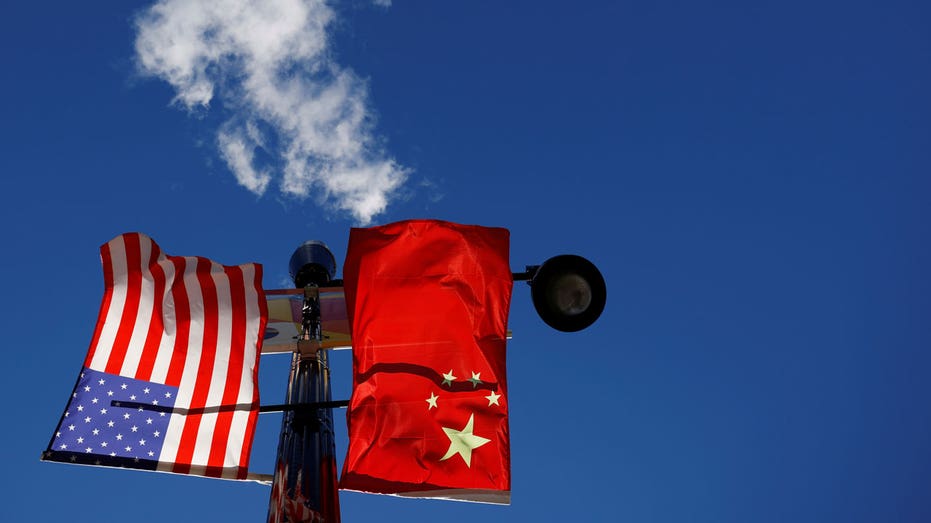Circle Squared Alternative Investments’ Jeff Sica is anticipating positive market indicators following Trump’s election win.
It may be time to scoop up commodities, as higher inflation potentially looms under a Trump administration and the out-of-favor asset class underperforms stocks for a second year.
The Bloomberg Commodity Index, a leading gauge, is down 2% this year against the 25% gain in the S&P 500 index. That comes after a 13% drop in 2023, when the equity benchmark returned 26%.
Most retail investors have little or no direct exposure to commodities, even as so-called alternatives like private equity, real estate, and private credit prove increasingly popular with wealthy individuals. A Goldman Sachs survey of family offices—ultrahigh-net-worth families that manage their own money—found that they had just a 1% allocation to commodities, against 26% for private equity.
It’s estimated that $250 billion in various strategies, including mutual funds and exchange-traded funds, are devoted to commodities, less than 0.5% of the $50-trillion-plus market value of the S&P 500.
WASHINGTON, DC – NOVEMBER 13: U.S. President-elect Donald Trump speaks at a House Republicans Conference meeting at the Hyatt Regency on Capitol Hill on November 13, 2024 in Washington, DC. As is tradition with incoming presidents, Trump is traveling (Allison Robbert-Pool/Getty Images / Getty Images)
But there are reasons to believe that commodities could perform better in the future, particularly if Donald Trump follows through on election promises regarding tariffs, which could spur higher prices.
BITCOIN WHALE ETF SOARS AS CRYPTO RACES
“Commodities are an inflation hedge and a diversification tool,” says Kathy Kriskey, the commodities strategist at Invesco. “We could be entering an inflationary period, and commodities are the most efficient hedge against inflation.”
Kriskey doesn’t have to be right about inflation for commodities to be worth owning—that’s the point of a hedge. A 5% allocation, her recommended amount, could have helped in years like 2022, when the S&P 500 was down 19% and the Bloomberg Commodity Index rose 14%. Rather than a standard 60-40 mix of stocks and bonds, a 60-35-5 portfolio that includes commodities could be a good approach in the coming years.
| Ticker | Security | Last | Change | Change % |
|---|---|---|---|---|
| GLD | SPDR GOLD SHARES TRUST – USD ACC | 241.09 | +4.50 | +1.90% |
| GOLD | BARRICK GOLD CORP. | 17.20 | +0.55 | +3.30% |
| NEM | NEWMONT CORP. | 42.36 | +1.43 | +3.49% |
GOLD ETFS ARE FINALLY JOINING THE PARTY
Many investors play commodities through resource producers, mainly energy stocks, but there also is a role for direct commodity exposure. It has been far better, for instance, to buy gold or gold ETFs like SPDR Gold Trust in the past five years than leading miners Barrick Gold and Newmont.
Investors can play commodities through broad ETFs or mutual funds. One benefit of the funds is that they can offer yields of 2% to 4% if they buy futures on margin and then invest the balance in short-term Treasuries or other bonds. The margin requirement can be just 10%, leaving 90% to be invested.
THE LATEST ON ETFS: FOXBUSINESS.COM
The largest ETF is the $4.4 billion Invesco Optimum Yield Diversified Strategy No K-1. As its name suggests, this ETF produces an annual 1099 tax form, like a typical mutual fund, and not a K-1. Many investors dislike K-1s because they can cause delays and additional expenses in preparing taxes. The Invesco DB Commodity Index Tracking ETF produces a K-1.
Invesco Optimum Yield Diversified Strategy
Different funds and ETFs track different commodity indexes, which have varying exposure to individual commodities. The Pimco CommodityRealReturn Strategy mutual fund tracks the Bloomberg Commodity Index and allocates roughly a third each to energy, agriculture, and metals. The iShares S&P GSCI Commodity Indexed-Trust ETF and the two Invesco commodity ETFs track indexes that are more than 50% energy, reflecting its status as the largest commodity class based on annual sales.

The flags of the United States and China fly from a lamppost in the Chinatown neighborhood of Boston, Massachusetts, U.S., November 1, 2021. (Reuters/Brian Snyder/File Photo / Reuters Photos)
Some of the knocks on commodities are volatility and their poor showing relative to stocks, though gold has topped the S&P 500 return over the past 25 years. The commodity outlook is also clouded by the prospect of Trump tariffs next year that could depress overseas economies.
| Ticker | Security | Last | Change | Change % |
|---|---|---|---|---|
| USO | UNITED STATES OIL FUND – USD ACC | 72.07 | +2.32 | +3.33% |
| BNO | UNITED STATES BRENT OIL FUND – USD ACC | 29.22 | +0.91 | +3.21% |
A lot of bad news, though, may already be factored into commodity markets. Benchmark U.S. oil prices are down 4% this year to under $70 a barrel, and natural gas is down 30% to less than $3 per thousand cubic feet. U.S. gas is one of the cheapest energy sources in the world.
FED CHAIR POWELL NOT GOING ANYWHERE EVEN IF TRUMP HAS ANOTHER IDEA
Greg Sharenow, a co-manager of the Pimco fund, says China’s economic troubles have weighed on commodities, including oil. He senses an opportunity with investors “pricing in a low probability” that China succeeds in boosting its economy.
An employee monitors the 8mm diameter copper cable which is rolled up before passing through a rolling mill to become cable at the Nexans manufacture in Lens, northern France, on May 11, 2022. – The French cable company is the only one in its sector ((Photo by Denis Charlet / AFP) (Photo by DENIS CHARLET/AFP via Getty Images) / Getty Images)
And for all of the excitement about copper as a “green metal” with growing use in electric cars and renewable energy, it is barely higher this year at just over $4 a pound. That could provide a good entry point for copper, particularly if China, the world’s largest consumer of the metal, continues to stimulate its economy.
Silver remains a key metal for renewable energy as a component in solar panels, and the total amount of silver mined is about $30 billion annually, about a tenth the value of gold mined each year.
sun rise over the corn field (iStock)
Corn and wheat prices are near multiyear lows and close to their cost of production, suggesting that the downside is limited. Corn is trading at just over $4 a bushel and wheat at $5.50 a bushel, roughly half of their 2022 peaks. Jake Hanley, a senior portfolio strategist at Teucrium, which manages ETFs with direct exposure to various grains, says the wheat outlook could be best among the grains because the world has consumed more wheat than it has produced for four of the past five years. And despite the impact of global warming, there hasn’t been a drought-depressed grain harvest in the Midwest for more than a decade. If one comes in 2025, grain prices could rise sharply. The Teucrium Corn and Teucrium Wheat ETFs trade near 52-week lows.
| Ticker | Security | Last | Change | Change % |
|---|---|---|---|---|
| WEAT | TEUCRIUM WHEAT FUND – USD ACC | 4.93 | +0.09 | +1.86% |
| CORN | TEUCRIUM CORN FUND – USD DIS | 18.21 | +0.14 | +0.77% |
Gold, silver, and many commodities have come under pressure since the election due in part to higher interest rates. The Bloomberg index is down 3% since Trump’s win. Timing is important with commodity investing, and this looks like a good entry point for investors.
| Ticker | Security | Last | Change | Change % |
|---|---|---|---|---|
| SLV | ISHARES SILVER TRUST – USD | 28.38 | +0.81 | +2.94% |
| SIVR | ABRDN PHYSICAL SILVER SHARES ETF – USD ACC | 29.73 | +0.86 | +2.98% |
It may be time for commodities to shine.
Write to Andrew Bary at andrew.bary@barrons.com
Copyright ©2022 Dow Jones & Company, Inc. All Rights Reserved. © 2024 Dow Jones & Company. All rights reserved. Terms of Use Privacy Notice Cookie Notice Accessibility Reprints Follow Us on LinkedIn Feedback

